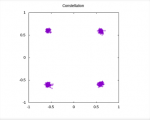moonbounce
Member
- Joined
- Nov 5, 2002
- Messages
- 1,404
Boatbod
These are the directions I am following Setting up OP25 Scanner Trunking on an Ubuntu Virtual Machine | RadioHobbyist.org and the system I want to listen to is trunked and it is a Motorola Type 2 Smart Zone. I made the changes you suggested and hit enter and all I got was this sign >.
These are the directions I am following Setting up OP25 Scanner Trunking on an Ubuntu Virtual Machine | RadioHobbyist.org and the system I want to listen to is trunked and it is a Motorola Type 2 Smart Zone. I made the changes you suggested and hit enter and all I got was this sign >.



